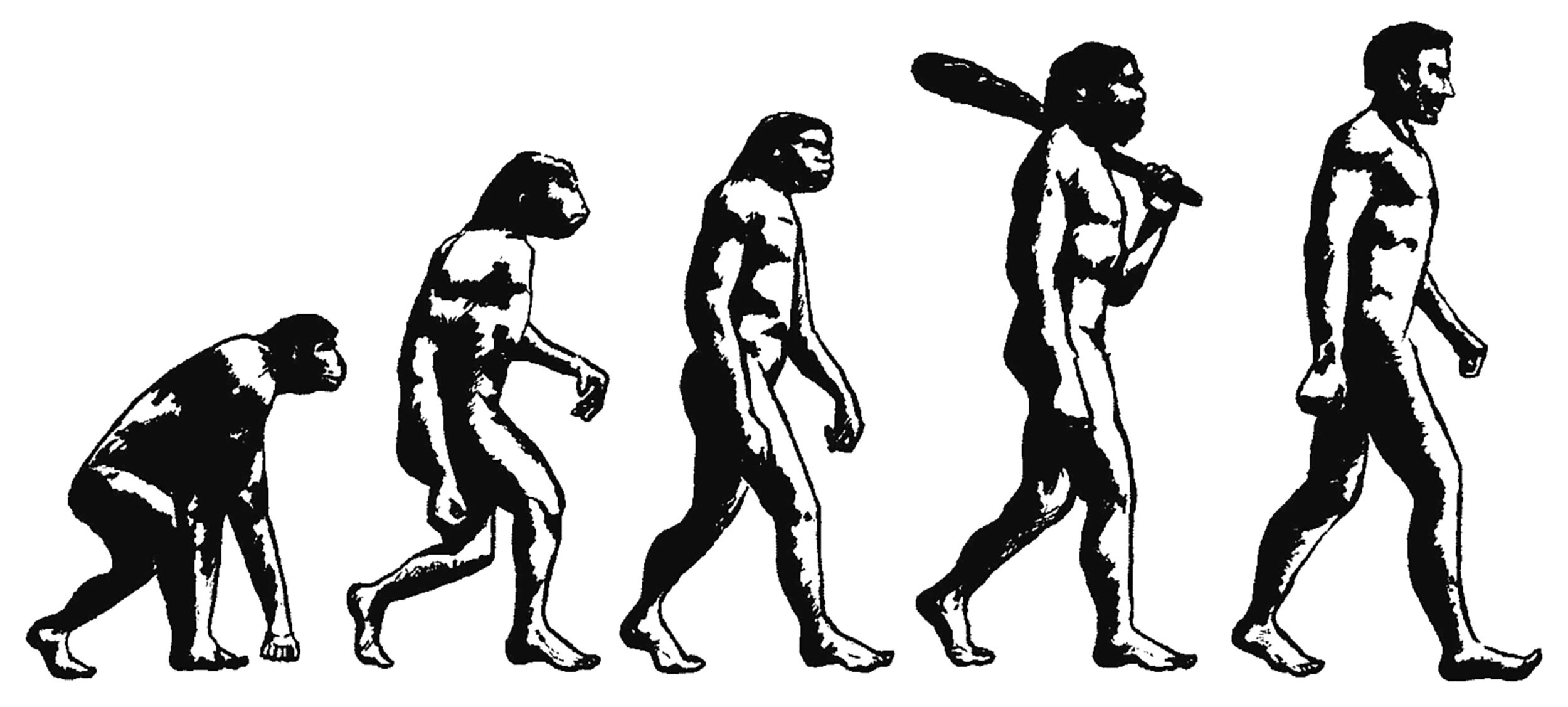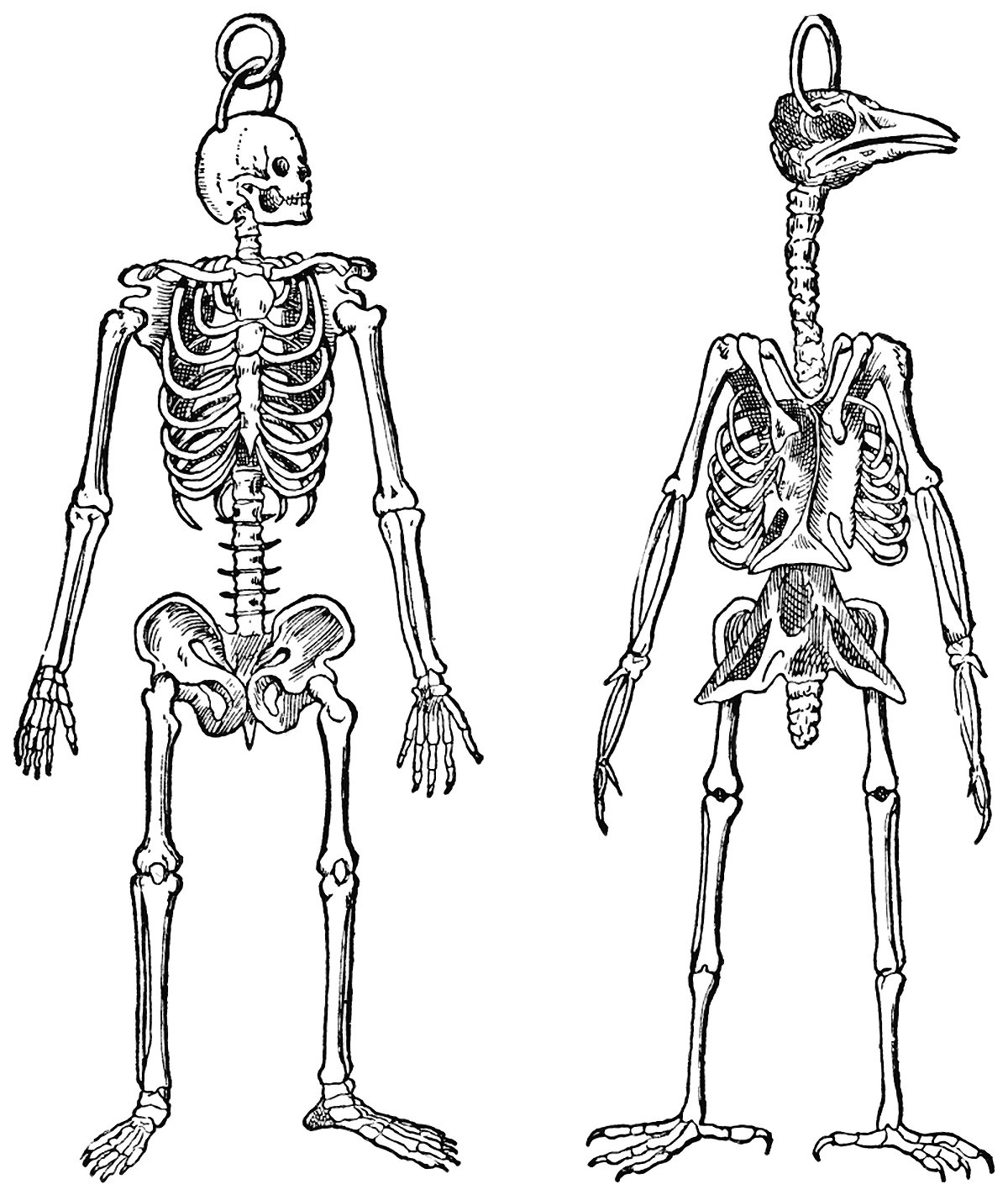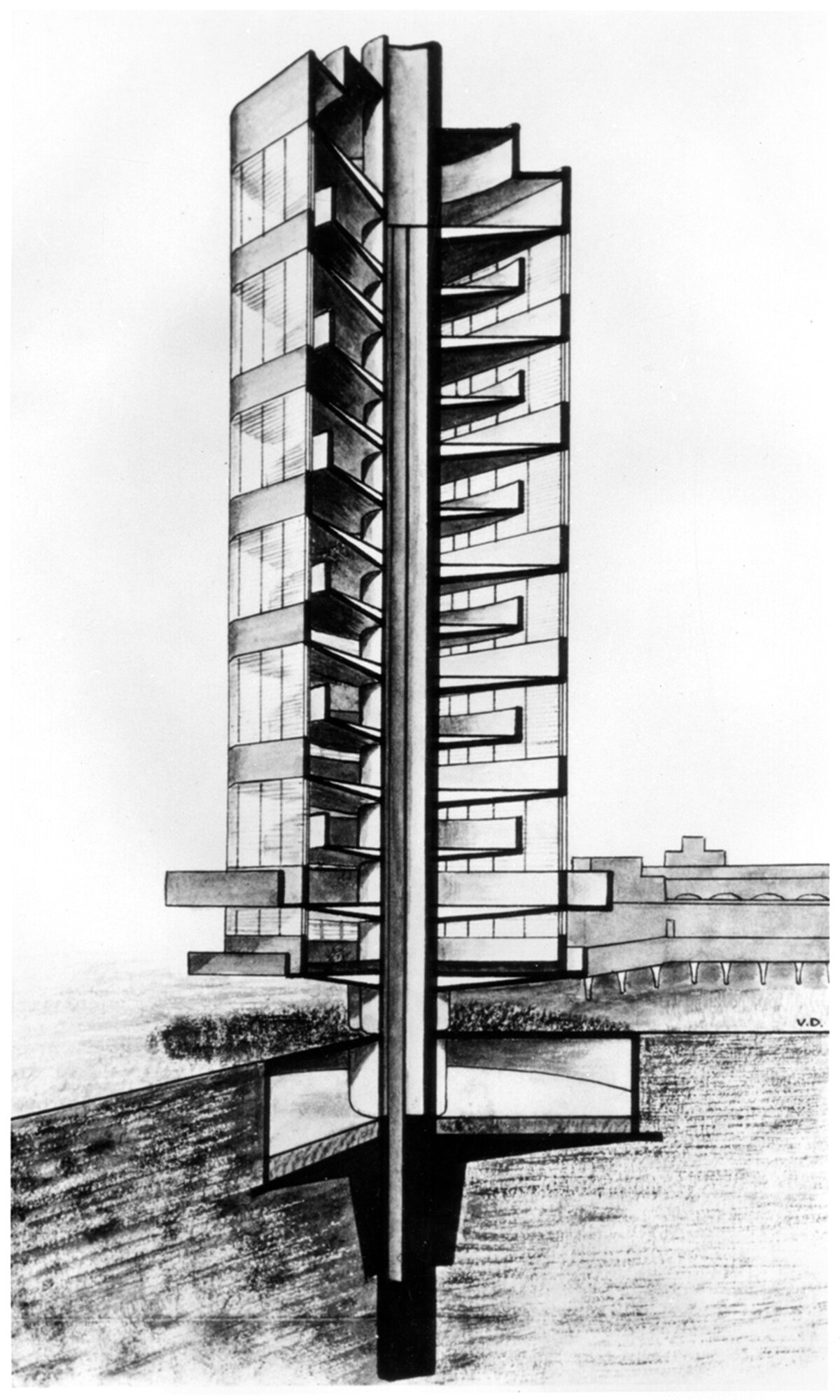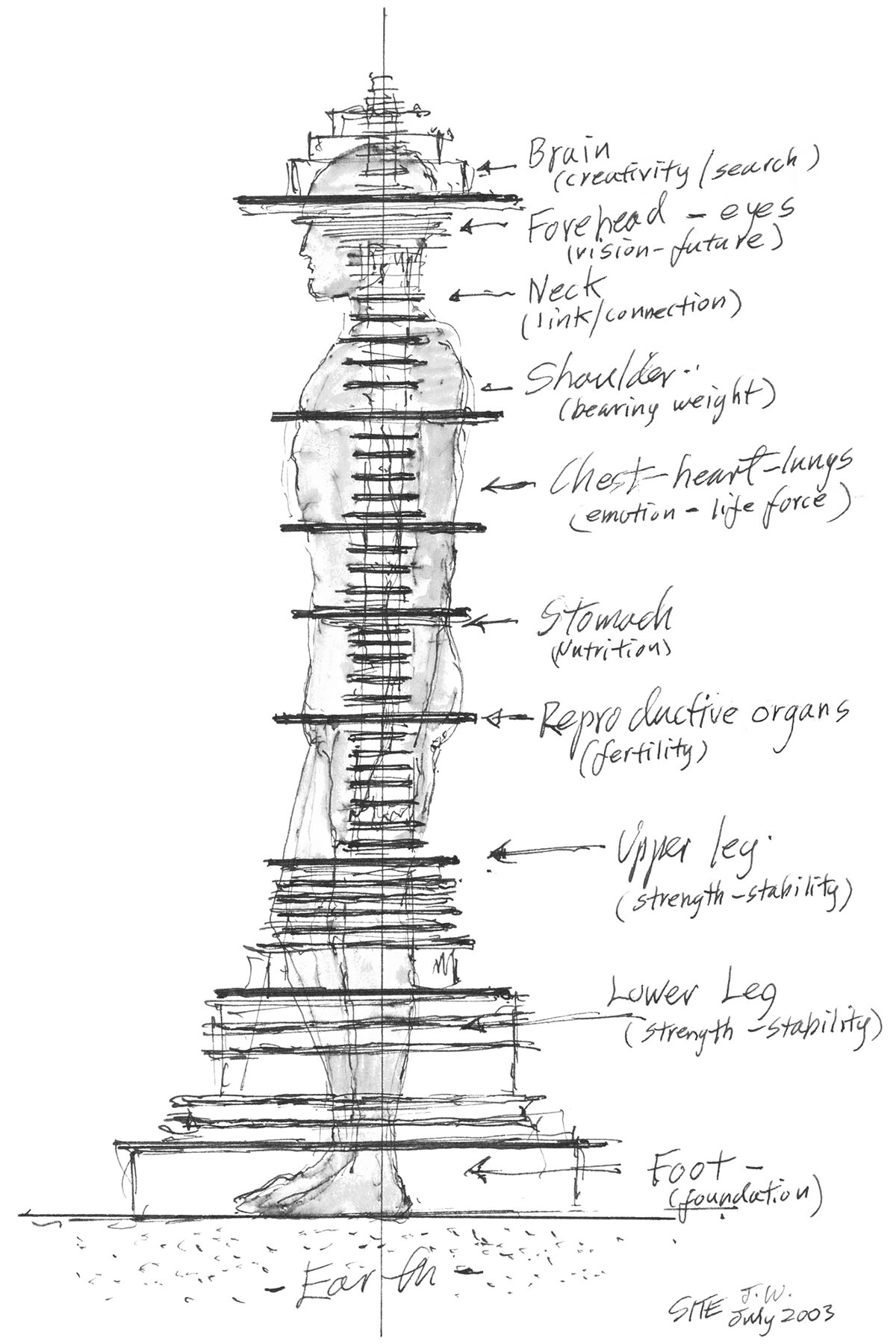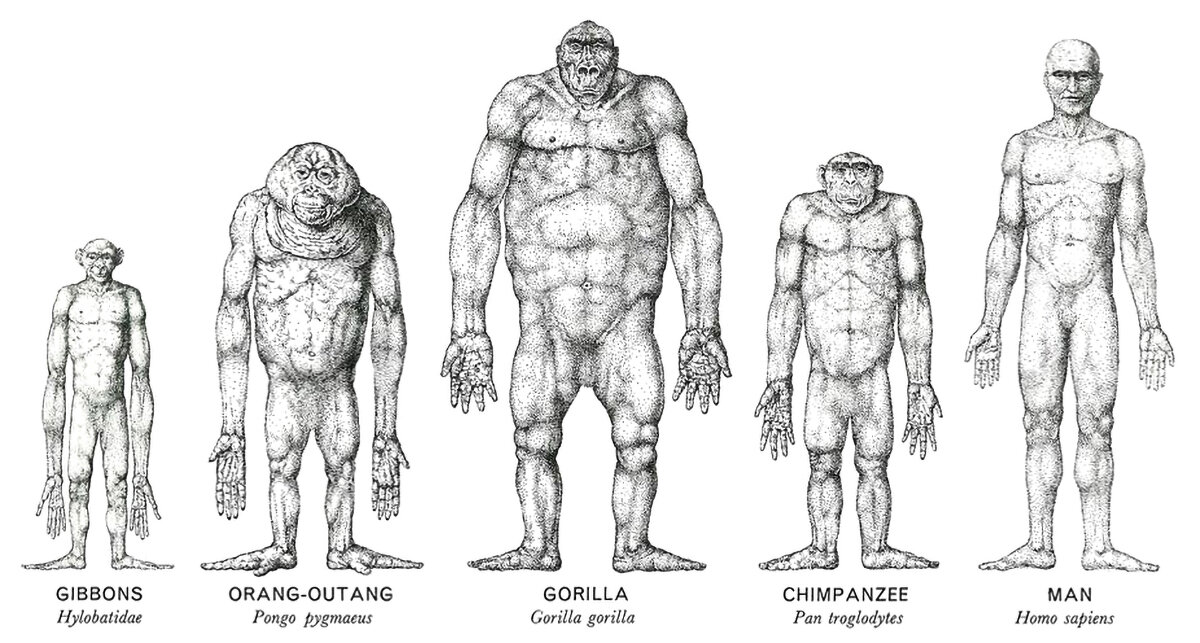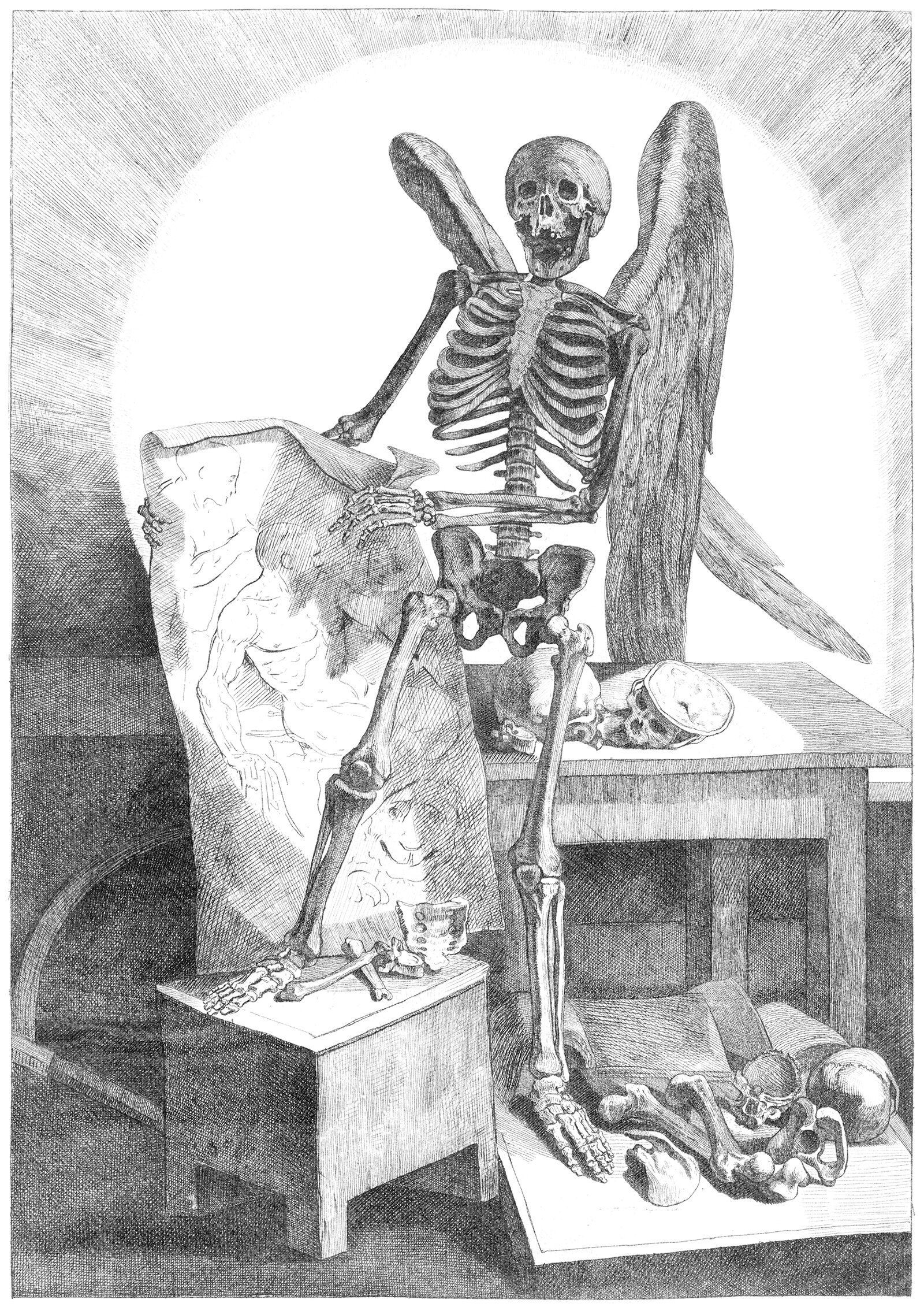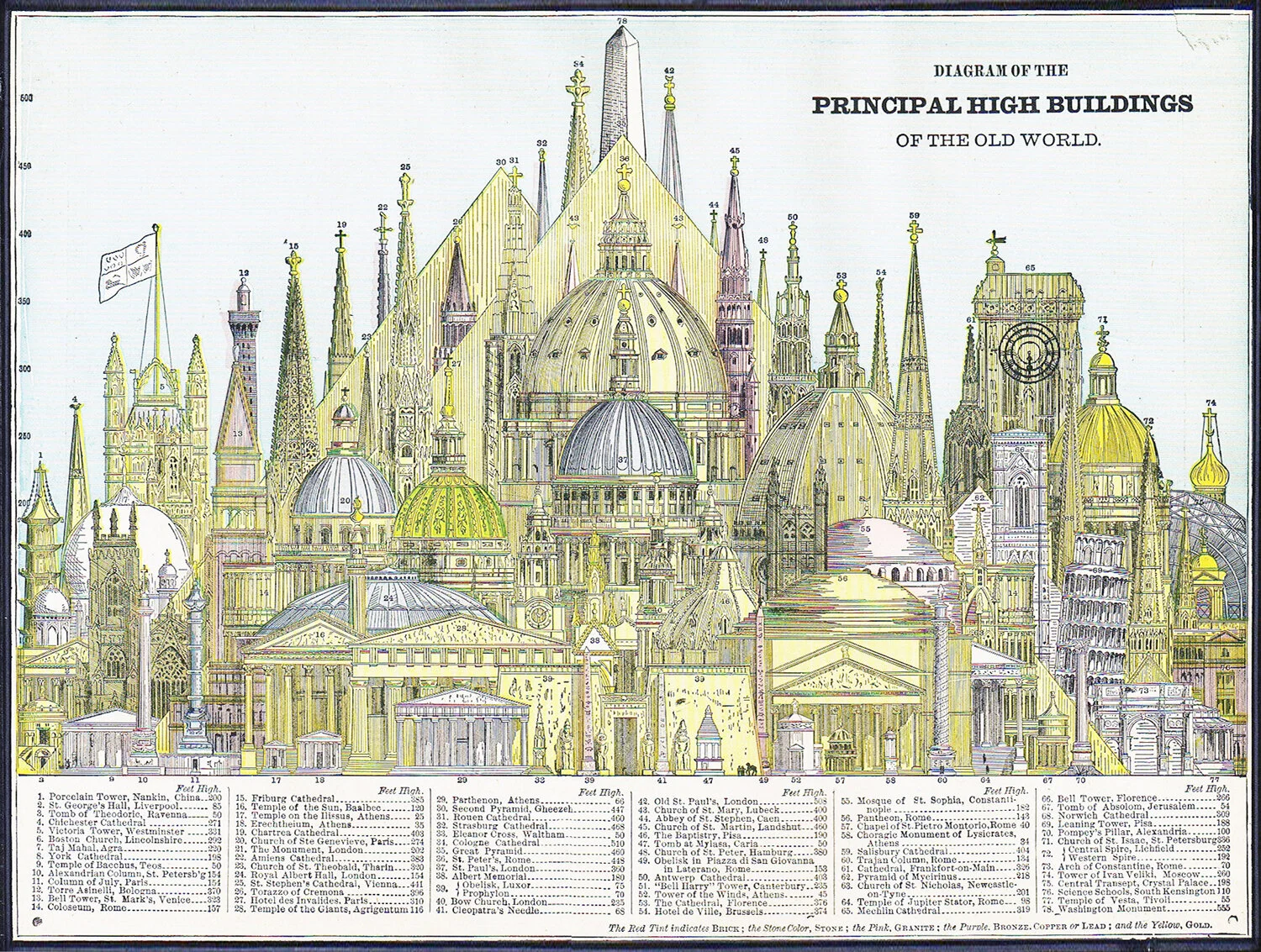Welcome to On Verticality. This blog explores the innate human need to escape the surface of the earth, and our struggles to do so throughout history. If you’re new here, a good place to start is the Theory of Verticality section or the Introduction to Verticality. If you want to receive updates on what’s new with the blog, you can use the Subscribe page to sign up. Thanks for visiting!
Click to filter posts by the three main subjects for the blog : Architecture, Flight and Mountains.
The March of Progress and the Fallacy of Progressive Evolution
Evolution and natural selection are tricky concepts to represent in an illustration. This is partly true because the reality of these processes is so complex and nuanced that some type of simplification is required when introducing them. This is a fine line however, because each concept can easily be over-simplified to the point of confusion. This is exactly what happened with the illustration above. At first glance, it appears to be a simple meme that shows how the human species went from moving on all fours to walking upright, but behind this is a fascinating and painfully unfortunate backstory about the nature of evolution.
The Skeletons of a Man and Bird
Pictured above is a comparison between the skeleton of a human and a bird. What I find fascinating about this image is the choice of the artist to position the bird in a bipedal stance. I suspect this was done just to ease the comparison, but in a way it undermines the birds power of flight. This is an animal who is at home when in the open air, but here the bird is shown with its feet firmly planted on the ground, much like a human. The playing field has been leveled, so to speak, which puts the bird at a specific disadvantage.
The Tree and the Skyscraper
Pictured above is a cutaway drawing of Frank Lloyd Wright’s SC Johnson Research Tower in Racine, Wisconsin, built in 1936. This little tower is famous for its structure, which functions like a tree. There’s a central trunk, or core, with floors cantilevering off it like branches. This removes the need for any perimeter columns since all the structural loads transfer back to the central core. There’s also the large taproot foundation, as Wright called it. This functions like the roots of a tree, providing stability to the overall form. Wright was well aware of the tree metaphor, and he used it to sell the vision to his client. It wasn’t the first time he tried to make a tower structure function like a tree, but it’s quite possibly the purist example of the metaphor to ever get built.
Bipedalism and The Skyscraper
I came across this diagram the other day, and it immediately struck me. It was drawn in 2003 by James Wines of SITE for his Antilia Tower project, and it superimposes a human body on top of a tower section. I’ve previously written about the conceptual link between the bipedal human body and the tower, but this diagram takes it a step further and matches the functions of each part of the body to each part of the tower.
A Comparison of Apes and Man
I’ve been watching a few documentaries on chimpanzees lately, and I’m continuously struck by how similar we humans are to our ape cousins. Our body language and social interactions closely relate, as well as our physical bodies. The major distinction between us and our ape cousins is that we walk upright on two legs. The above illustration caught my eye because It compares the human body to other members of the hominoid family, much like a police lineup. This approach is intriguing, because it shows everyone standing upright on two legs. This, along with removing all hair from the bodies, allows for an easy comparison between the species.
The Human Body and Flight : Why We Can’t Fly
The ability to fly is something that’s been on the human mind since time immemorial. We see birds and other creatures flying through the air, and we seek to fly as they do. We dream about it, and we’ve thought up myriad examples of human-like characters throughout our legends and myths who can fly. For all our hoping, however, it’s impossible for us to fly under our own strength. Let’s take a closer look at why this is true.
Domes and Steeples of the Old World
This drawing is from an 1884 issue of Cram's Unrivaled Family Atlas of the World, and it depicts the Principal High Buildings of the Old World. What’s striking about the composition is how many domes and steeples are featured. Aside from the hulking pyramids in the middle ground, there is a forest of slender steeples running along the background, along with a bunch of bulky domes that dominate the middle of the diagram. Steeples and domes were our most popular methods for achieving Verticality throughout history, with each form pushing up towards the sky and announcing its presence, and therefore importance, to the surrounding landscape.

